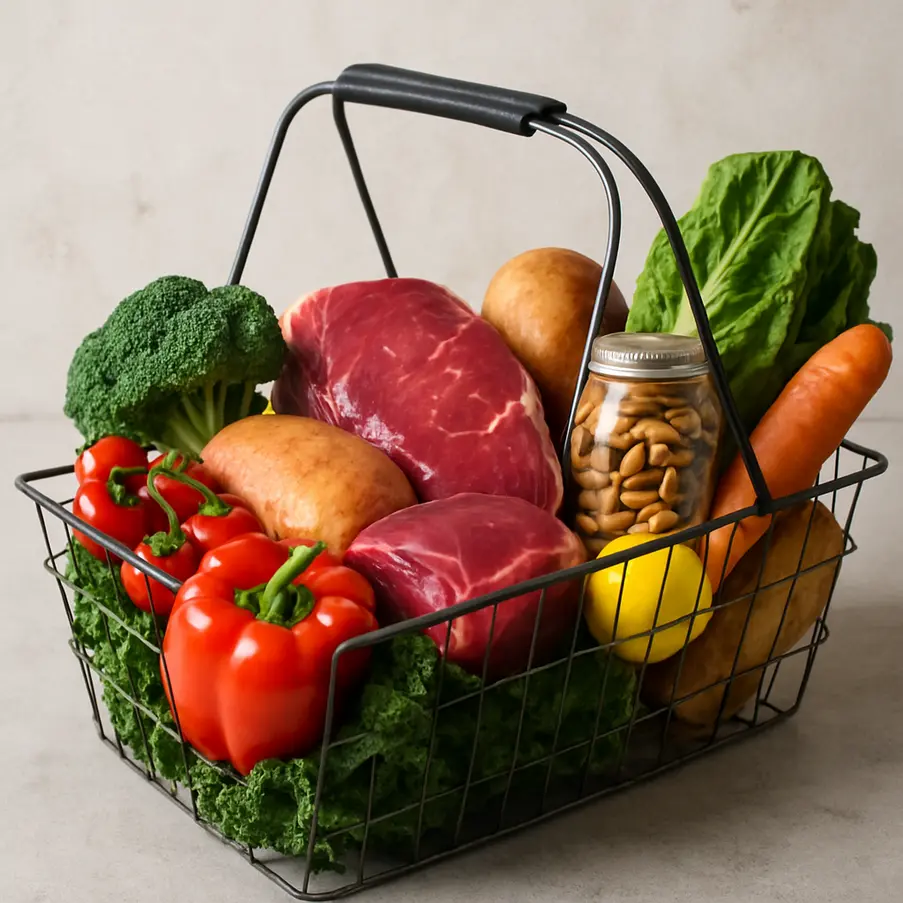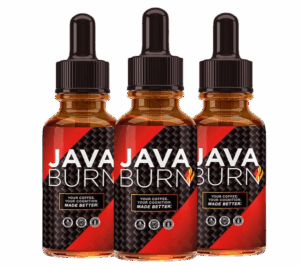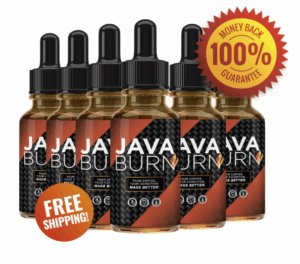Embarking on a Paleo diet can feel like an exciting exploration into the past, where whole, unprocessed foods reign supreme. Whether you’re just starting or are already a Paleo enthusiast, having a comprehensive food list and shopping guide can make your journey smoother and more enjoyable. This guide will empower you with the knowledge to navigate your grocery shopping trips effectively, helping you make nutritious choices with confidence and ease. Delve into the chapters that unveil the essence of Paleo food selection, practical tips for shopping, and how to maintain a balanced lifestyle in line with the principles of this ancient diet.
Understanding the Basics of the Paleo Diet
The Paleo diet, often termed the “Caveman Diet,” focuses on mimicking the eating habits of our Paleolithic ancestors. By understanding the core principles of this diet, you can make informed choices that align with its philosophy.
At its heart, the Paleo diet encourages consuming foods that could be hunted or gathered, such as lean meats, fish, fruits, vegetables, nuts, and seeds. These components form the foundation of your Paleo food list. The emphasis is on whole foods, which are minimally processed and maintain their natural integrity.
By contrast, the diet deliberately avoids foods that emerged with the advent of agriculture and modern food processing. These include grains, legumes, dairy products, refined sugar, and processed foods. The underlying rationale is that our bodies are better adapted to the dietary patterns of prehistoric times, which lacked such developments. This approach hinges on the belief that contemporary diseases like obesity and diabetes stem from dietary shifts that outpaced human evolutionary adaptations.
Why These Choices?
The rationale behind the Paleo diet selections is partly based on the presumed genetic blueprint of early humans. Proponents argue that by eating like our ancestors, we can optimize our health. Foods encouraged in the Paleo diet are rich in anti-inflammatory properties, healthy fats, and essential nutrients. For example, nuts and seeds provide omega-3 fatty acids, which support brain health and reduce inflammation.
Avoiding grains and processed sugars helps stabilize blood sugar levels, reducing insulin spikes and mitigating the risk of metabolic disorders. Dairy exclusion stems from the argument that many individuals are lactose intolerant without realizing it, and removing such items can improve digestive health.
As part of your journey, consider complementing the diet with regular exercise for overall well-being. For guidance on exercise routines that fit a Paleo lifestyle, explore our comprehensive guide on effective weight loss strategies for beginners, which includes fitness tips to enhance your Paleo experience.
In summary, adopting a Paleo lifestyle involves thoughtful choices about food that respect our evolutionary background, focusing on natural and unprocessed options. By doing so, you may find improvements in health and vitality.
Crafting Your Paleo Shopping List
When you’re committed to following the Paleo diet, crafting a well-thought-out shopping list becomes an essential skill. A successful list is one that encompasses all necessary ingredients for balanced meals while respecting the dietary principles you’ve chosen to embrace. Here’s how you can strategize to create a Paleo-friendly shopping list that works for you.
First things first: focus on whole, unprocessed foods. The bulk of your list should encompass fresh fruits, vegetables, and a variety of meats like grass-fed beef, free-range poultry, and wild-caught fish. Your goal is to replicate what our Paleolithic ancestors would have prioritized, meaning ingredients that are free from modern processing. This approach keeps your diet clean and rich in nutrients.
Emphasize quality over quantity. When choosing meats and produce, seek out the freshest options. Organic fruits and vegetables can reduce exposure to pesticides, while grass-fed and organic meats typically offer more nutrients and healthier omega-3 fatty acids. For seafood, wild-caught options provide superior nutrient profiles compared to farm-raised varieties.
Another cornerstone of the Paleo diet is incorporating healthy fats like avocados, coconut oil, and nuts. Pay attention to labels and opt for unsweetened nuts and nut butters, which prevent unwarranted sugars from sneaking into your diet. Similarly, selecting oils that are cold-pressed and pure ensures that you’re getting healthy fats without unwanted additives.
Proficiency in label reading is vital. By mastering this skill, you avoid mistakenly purchasing items that seem Paleo-friendly but contain non-compliant ingredients. Check for added sugars, preservatives, and artificial flavors that could compromise your diet’s integrity.
Don’t overlook the importance of spices and condiments. While these can elevate your meals, not all seasonings are created equal in the Paleo realm. Opt for simple spices and organic herbs, avoiding mixes loaded with anti-caking agents. Mustard, apple cider vinegar, and raw honey can be great, minimal-processed additions to your cart.
For those looking to balance Paleo with specific health goals, there’s an article on resistance band workouts for toning which can help enhance your fitness journey.
By taking the time to meticulously plan your shopping list with these strategies, you set yourself up for Paleo success, ensuring your pantry aligns with your dietary ambitions.
Paleo-friendly Alternatives and Substitutes
Cravings for modern comfort foods can derail your Paleo journey. However, satisfying these cravings with Paleo-friendly alternatives is both practical and delicious. Let’s explore some common non-Paleo foods and see how we can replace them seamlessly.
Bread and Pasta: It’s difficult to ignore the allure of warm, fluffy bread or a comforting bowl of pasta. Luckily, almond flour and coconut flour make excellent bases for various Paleo bread recipes. For pasta, try spiralized vegetables such as zucchini or squash. These alternatives not only replicate the texture but also pack more vitamins and minerals.
Rice: Cauliflower rice has become a staple for those seeking a grain-free substitute. Simply pulse cauliflower in a food processor until it resembles rice and then sauté it lightly. This fluffy alternative is versatile, offering a neutral taste that complements many dishes.
Dairy Products: For cheese lovers, cashew cheese offers a creamy, dairy-free solution. Blend soaked cashews with nutritional yeast, lemon juice, and a pinch of salt. This alternative is perfect for spreading over Paleo crackers or adding to various recipes.
Sugar: While sugar isn’t allowed on Paleo, there are sweeter solutions. Raw honey, maple syrup, and dates offer natural sweetness without the processed drawbacks. Use these in moderation to sweeten baked goods or your morning coffee.
Beverages: Smoothies and fruit juices often contain hidden sugars. Instead, blend kale, spinach, and a handful of berries with coconut water for a refreshing drink. Pairing this with a Paleo-friendly snack can provide a sustained energy boost throughout the day. Discover other beneficial routines in best snacks before a workout.
Recipe Idea: Try making a Paleo pizza using a cauliflower crust topped with tomato sauce, a generous layer of cashew cheese, and plenty of fresh vegetables. It’s a deliciously healthy twist that satisfies your cravings without compromising your Paleo diet.
Navigating the Paleo diet doesn’t mean giving up modern pleasures entirely. With a little creativity, you can find fulfilling substitutes for nearly all your non-Paleo favorites. Experiment with these alternatives and enjoy the rewarding journey to health and wellness.
Maintaining Balance and Flexibility
Adopting the Paleo diet aims to return us to our ancestral eating habits, emphasizing whole, unprocessed foods. However, integrating this way of eating into daily life without feeling confined can be challenging. The key is maintaining balance and flexibility, ensuring variety and satisfaction in your meals.
First, it’s crucial to remember that the Paleo diet is a guideline, not a strict set of rules. Allow yourself some leeway to include non-Paleo foods on occasion. Doing so keeps the diet sustainable in the long run. If you’re out with friends or celebrating an occasion, enjoy what’s available. The goal is thoughtful moderation rather than restriction, ultimately supporting overall well-being.
Flexibility also extends to meal planning. Consider creating a dynamic shopping list that includes a variety of proteins, vegetables, and fruits, while leaving room for treats. Aim to incorporate seasonal produce for freshness and flavor, enhancing your meals while respecting the Paleo framework. Building meals around core Paleo principles while making room for non-Paleo ingredients ensures a well-rounded approach.
Culinary creativity can also aid in maintaining balance. For instance, use almond or coconut flour for baking instead of traditional wheat flour, and explore sweeteners like honey or maple syrup instead of sugar. This approach helps incorporate diverse flavors into your meals, keeping them exciting and nutritious.
Additionally, you can enjoy meals with non-dieting friends by focusing on Paleo-friendly dishes that everyone can appreciate. A rich, savory stew with lean meats and assorted vegetables exemplifies a simple yet delicious meal that aligns with your dietary goals.
Regular exercise is another pillar that aids in maintaining balance. Incorporating a consistent workout routine, such as effective weight loss strategies for beginners, can complement your dietary choices, supporting your overall health journey.
Ultimately, the Paleo diet’s flexibility comes from your willingness to adapt it to your lifestyle. Acknowledge your cravings and address them mindfully to avoid feeling deprived. Understanding that it’s okay to deviate from guidelines occasionally is empowering and can lead to a more sustainable and enjoyable Paleo journey.
Final words
As we’ve navigated through the various aspects of the Paleo diet food list and shopping guide, it’s evident that this dietary approach not only promotes healthful eating but also helps you reconnect with natural food choices. The helpful tips and insights provided should empower you to approach each meal with enthusiasm and confidence. Remember, the key to thriving on a Paleo diet is to stay informed and experiment with different food combinations to find what best suits your lifestyle. If you’re keen to delve deeper into the benefits and nuances of special diets, be sure to explore more articles on our site.





Hepato Burn
$ 79,00Original price was: $ 79,00.$ 49,00Current price is: $ 49,00.Nagano Tonic
$ 79,00Original price was: $ 79,00.$ 39,00Current price is: $ 39,00.Balmorex Pro
$ 79,00Original price was: $ 79,00.$ 49,00Current price is: $ 49,00.Java Burn
$ 79,00Original price was: $ 79,00.$ 49,00Current price is: $ 49,00.